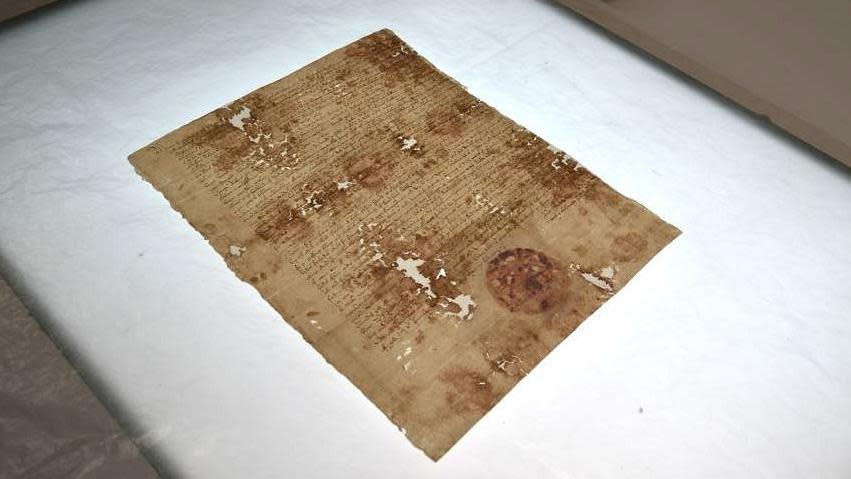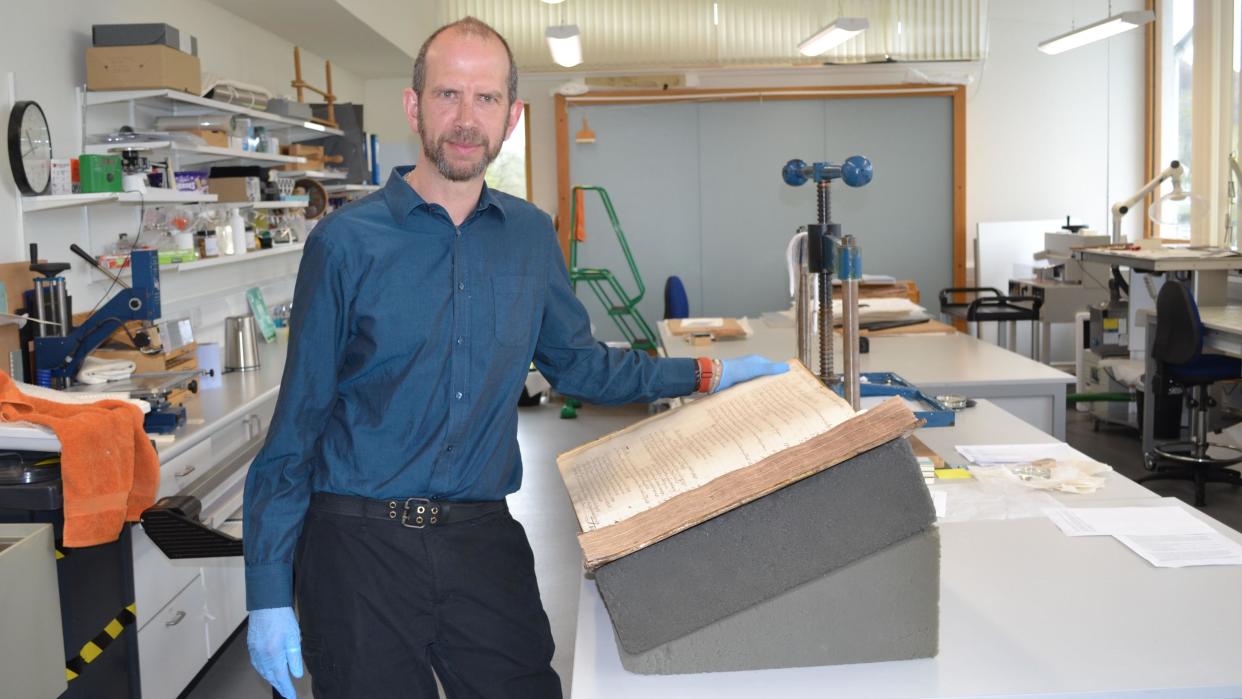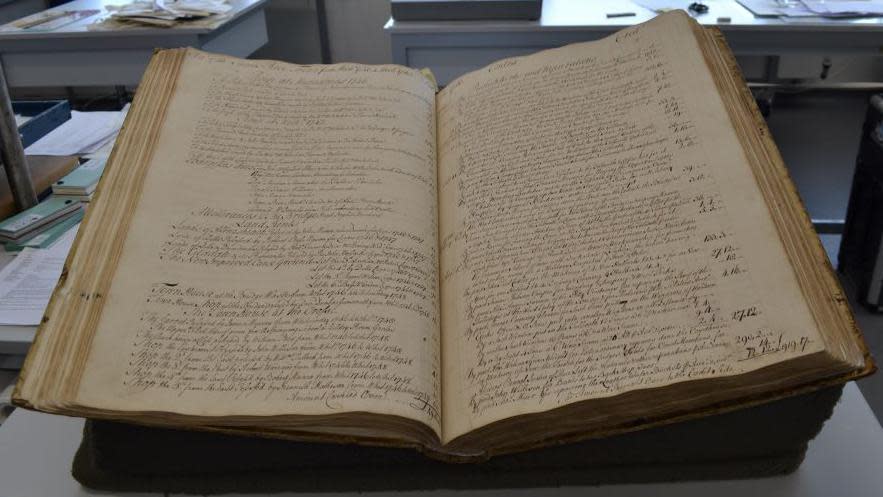Rare and fragile Mary Queen of Scots letter saved

A rare Mary, Queen of Scots letter written almost 500 years ago has been saved by conservation treatment.
The document from 1546 granted the 4th Earl of Argyll land for the killing of 50 rebels against the Scottish Crown in Dumbarton.
Mary became Queen of Scots when she was six days old, and would have been three or four years old when the letter was written on her behalf. A signature on the back is believed to hers.
The letter was conserved and preserved by a team at the Highland Archive Centre in Inverness and will be returned to Argyll Estates' Inveraray Castle for the text to be fully transcribed.
Richard Aitken, senior conservator at High Life Highland's (HLH) archive centre, said: "The letter arrived to us folded and very fragile, with lots of weak areas.
"Unfortunately the seal, which would have been beeswax, is in fragments. There is not much of it left."
The document was carefully unfolded and a test done on the ink to determine the safest method to conserve it.
The letter was given a "bath" in a process called a phytate wash.
This removed excess acid and also replenished fibres in the paper.
Japanese paper, a tissue used in book repairs, was carefully applied to fix holes in the document. Tissue was applied to the reverse to line and support the letter.
HLH said Mary, Queen of Scots letters from 1546 were rare.
The document conserved in Inverness would have been written on her behalf by the royal regent, an advisor and temporary monarch.


Mary was born at Linlithgow Palace in West Lothian and reigned from 1542 until her forced abdication in 1567.
After 19 years as a prisoner of her cousin, Elizabeth I of England, she was executed on 8 February 1587.
The archive centre's other conservation work includes restoration work on the Inverness Treasurer Book.
More than 220 pages long, it records Inverness burgh finances from 1732 to 1790 and includes payments for executions carried out by hangmen.
The centre is one of four in the Highland area, with the others in Wick, Portree and Fort William. The service's archives date from the 1200s.
Inverness's records, if laid out, would stretch for six miles.
